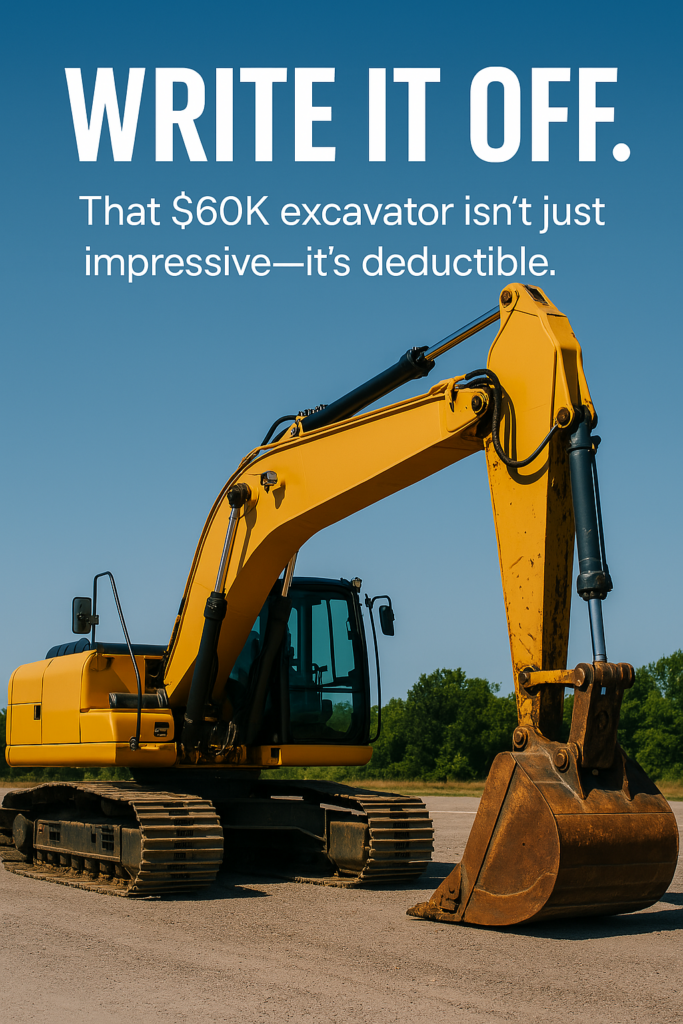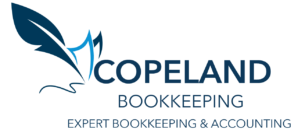
When it comes to tax deductions, most construction business owners remember to write off small tools—like drills, hammers, or tape measures. But what about the big-ticket items?
If you’ve purchased equipment like excavators, bulldozers, skid steers, or generators, those are major investments—and the IRS allows you to recover the cost of that equipment through a process called depreciation.
Let’s break down how that works, and how you can maximize your deduction.
What Is Equipment Depreciation?
Depreciation is the IRS’s way of recognizing that large assets lose value over time.
Instead of deducting the full cost of a large piece of equipment in one year, you spread out the deduction over the life of the asset. For most construction equipment, that’s typically 5 to 7 years.
So, if you buy a $50,000 skid steer, you might write off around $10,000 per year over five years (depending on the depreciation method used).
Enter: Section 179 – A Contractor’s Best Friend
Here’s where it gets exciting: under Section 179 of the IRS tax code, you can deduct the entire cost of eligible equipment in the year you buy it, rather than waiting years to fully depreciate it.
This is a huge benefit for construction businesses that invest heavily in tools and machinery.
To qualify for the Section 179 deduction:
- The equipment must be purchased and placed into service during the same tax year.
- It must be used for business purposes more than 50% of the time.
- The deduction is limited to $1,220,000 for 2024 (subject to phase-outs for total purchases above $3,050,000).
This means if you spend $60,000 on a new excavator this year and use it primarily for your business, you can deduct all $60,000 on this year’s tax return.
What Equipment Qualifies?
Most tangible items used in your construction business qualify, including:
✅ Excavators
✅ Bulldozers
✅ Skid steers
✅ Cranes
✅ Generators
✅ Trailers
✅ Welding equipment
✅ Large power tools
✅ Office equipment (computers, printers, etc.)
Used equipment also qualifies—as long as it’s new to you and meets IRS requirements.
Don’t Forget Bonus Depreciation
In addition to Section 179, the IRS offers bonus depreciation, which allows you to write off a large percentage of an asset’s cost in the first year.
This can be used after you reach your Section 179 limit, or on property that doesn’t qualify under Section 179.
Note: Bonus depreciation is phasing down from 100% to 60% in 2024, with further reductions scheduled unless Congress extends it.
How to Claim the Deduction
To properly claim depreciation or Section 179:
- Keep detailed purchase records (invoices, receipts, financing agreements).
- Record the date you placed the equipment in service.
- Work with a bookkeeper or tax professional to complete Form 4562 and ensure you’re using the best depreciation method for your business.
Final Thoughts
Heavy equipment is a major investment—but it can also be a major tax saver if you deduct it properly.
At Copeland Bookkeeping, we help construction business owners:
- Track equipment purchases
- Maximize their Section 179 deductions
- Stay compliant with IRS rules
📞 Need help making the most of your equipment deductions?
Let’s talk! Book a short phone call with us to get started.
